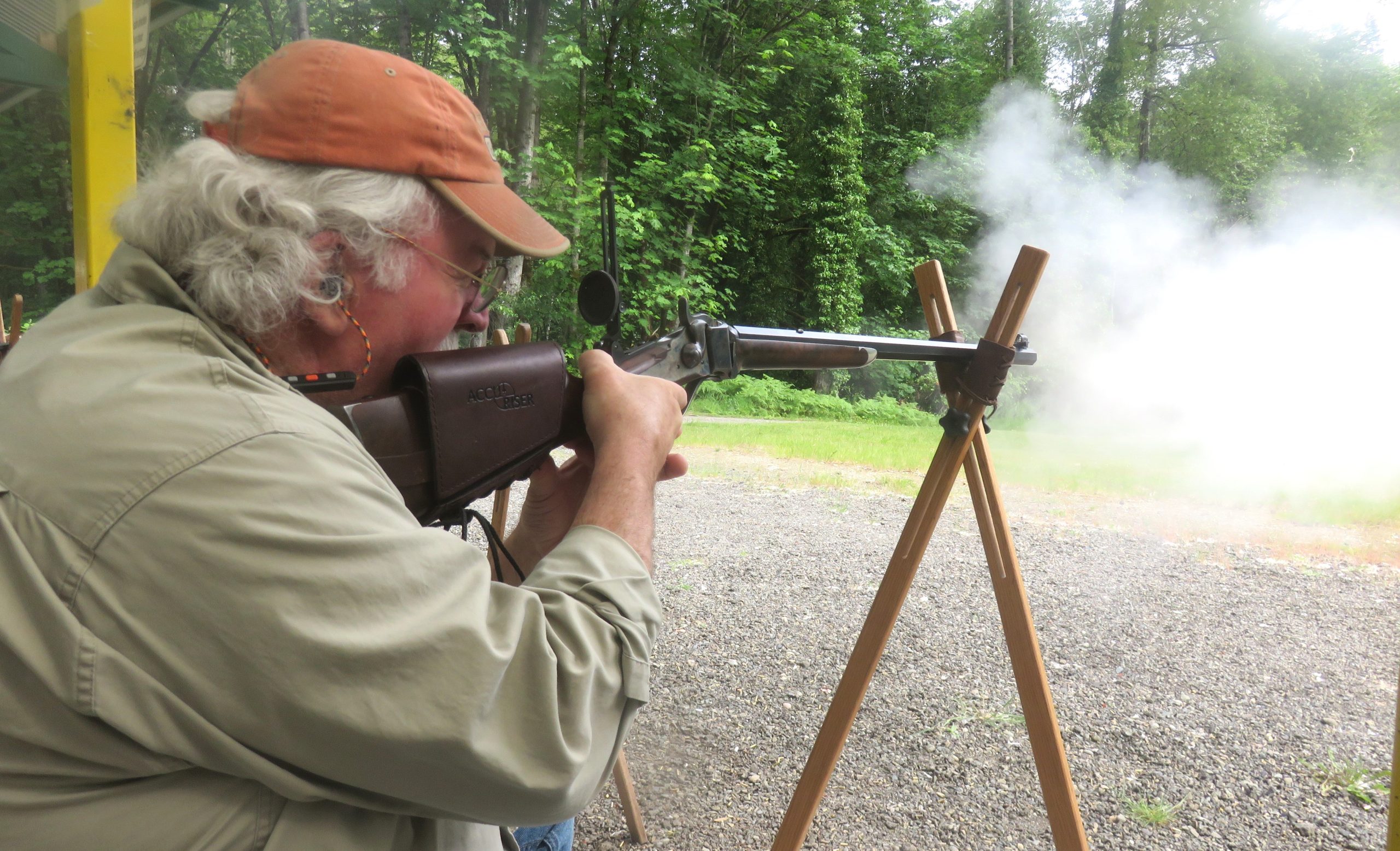
By Mike Nesbitt | Contributing Editor
Surprises can come with any black powder caliber, especially after you think everything is being done right.
My favorite Sharps in .50-70 caliber recently gave me a good surprise and now I hope I’ve learned a valuable lesson. At least for now I’ll be shooting up some earlier reloads, mainly so they can be reloaded using bullets cast with a “new” alloy that this rifle seems to like.
Just changing the bullet’s alloy is part of “tweaking the loads” which has been mentioned before. In this case, no other change was made in the type of powder or powder charge, the same primers were used and the same wad between the powder and the bullet. The same taper crimp was used after seating the bullets. Only the alloy of the bullet metal was changed and I’m actually quite sorry that I can’t specifically say what the new alloy is. Let me try to explain how that happened.
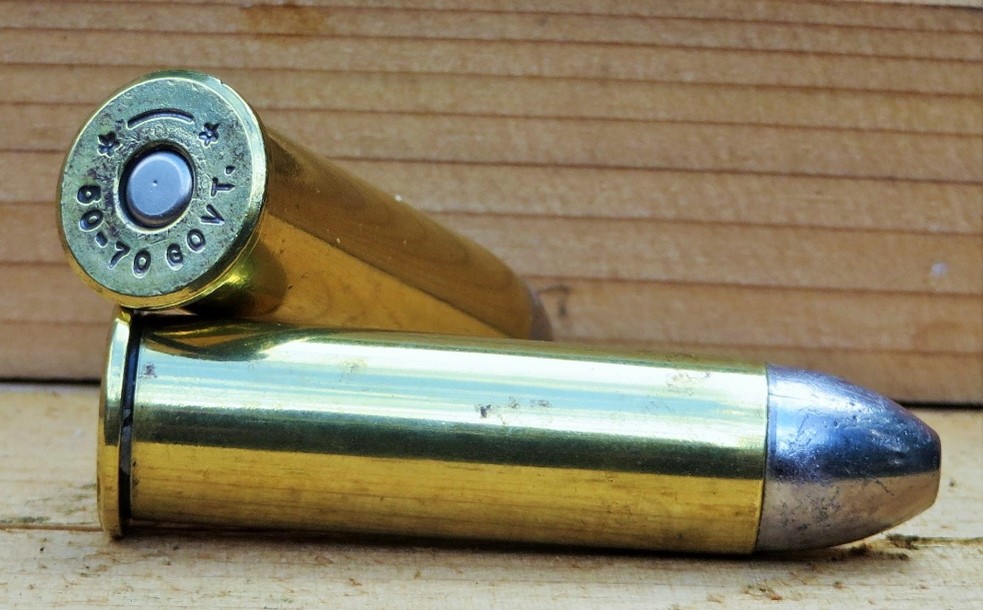
Previously, the alloy favored for my .50-70 loads was a 25-1, lead to tin mix. That was working fairly well. Following that, the alloy was changed to 30-1 and that change was made in favor of some other calibers, or for the bullets in other calibers. Those other bullets included some paper patched bullets for the .50-70 along with the .45-70 and .45-90 loads that were getting more attention at the time. I might also add that quite a bit of shooting was being done with a .36 Navy revolver and the 30-1 alloy was working well with the .375-inch diameter round balls the cap and ball revolver used.
Liking the 30-1 alloy in general, and taking advantage of making a trip to Buffalo Arms, I found myself with 200 pounds of that lead, which means I hauled it home rather than pay for shipping. With that “stash,” I guessed that my needs for lead were taken care of, which they actually were but, as my surprise came, with the tweaking which did improve things.
The bullets being used were cast from Accurate Molds’ number 52-450L2, a bullet that looks like the traditional military bullet for the .50-70 but it is slightly longer and has larger grease grooves than Lyman’s #515141, which is considered as standard. For my loads, that bullet is usually sized to .512-inch and lubed with BPC Lube from C. Sharps Arms. In fire-formed Starline cases, those bullets are loaded over 65 grains of Olde Eynsford 2F powder with an .060-inch Walters’ wad over the powder. That combination is compressed to make room for the bullets, which are seated with all lube grooves hidden inside the case. Then the bullets are seated just with fingertips, into the un-sized cases, followed by being run through the taper crimp die which lightly keeps the bullets from falling back out. That description, in a bit of a nutshell, tells about the “makin’s” for my usual .50-70 load, which I do use quite a bit.
We might expect that any shortcomings in a bullet’s performance would be noticed right away but such was not the case with the bullets in my .50-70 loads. For one thing, switching to the 30-1 alloy for the bullets came about at almost the same time as my switching from right-handed to left-handed shooting, a transition that is still going on. In other words, I had to gain, or re-gain, some proficiency in my shooting before detecting any problems or sub-standard performance in my ammunition.
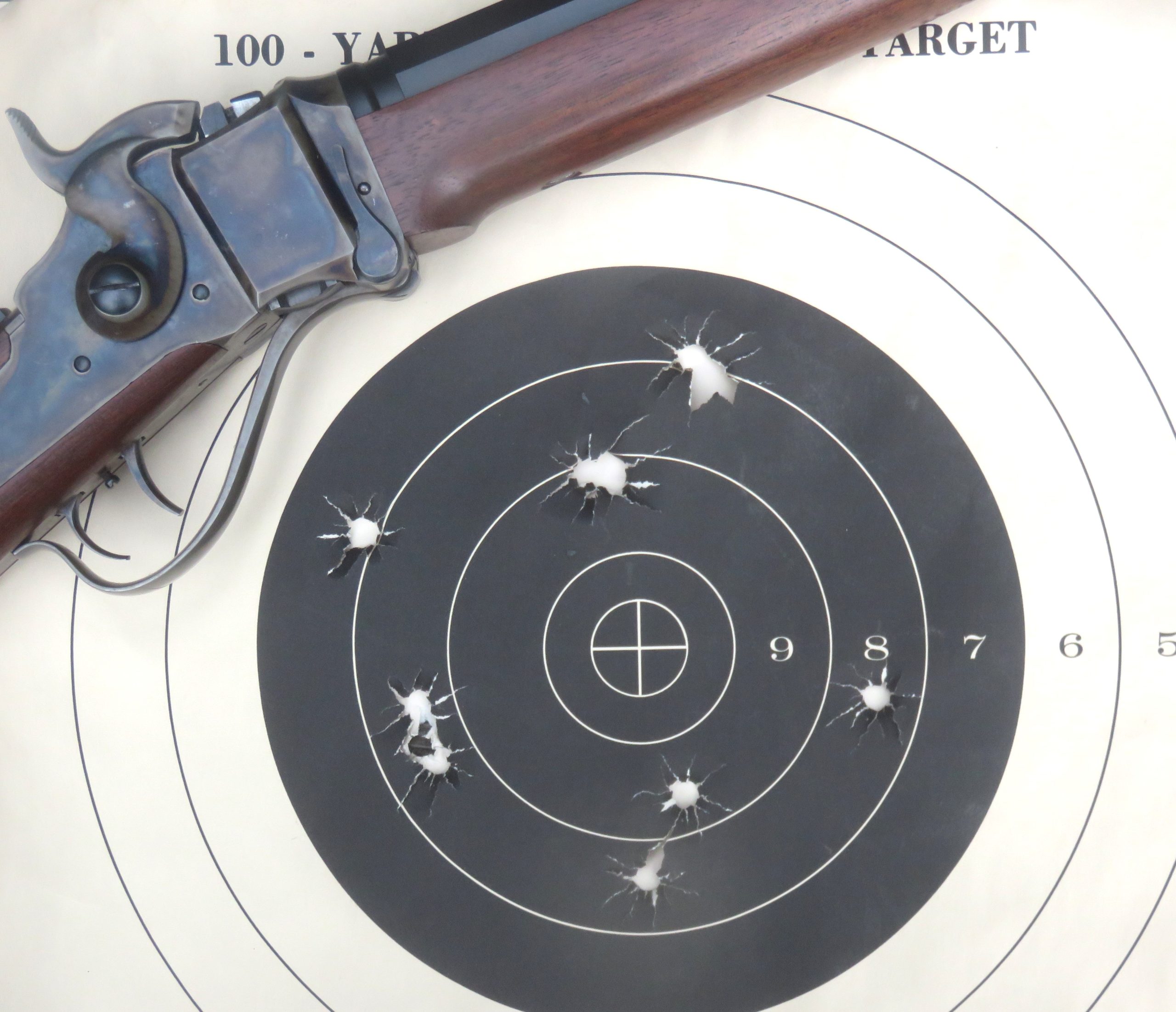
Here’s the “doughnut group” with nothing in the center.
The real message that something might be wrong, or not as good as it should be, came about in the Little Quigley Match at our recent Buffalo Camp. In the Little Quigley Match there are three gongs all at 200 yards, similar to the targets used at the Matthew Quigley Buffalo Rifle Match, held annually near Forsyth, Montana, plus one more gong, the “bucket,” which we shoot offhand with the target positioned at 100 yards. The targets we use in the Little Quigley Match are scaled down to give the effect, somewhat, of shooting at longer distances. Our four gongs are each fired at with five shots, which makes our Little Quigley Match a 20-shot event.
This year, shooting the Little Quigley Match left-handed for my first time, I experienced my lowest score, only 3 hits with the 20 shots I fired. That told me something was wrong… And yet, my missed shots were all very close but that only added to my frustration. My shooting in this match was recorded and I was the lowest scoring shooter on the list.
So, some searching was conducted. A standard 100-yard target was posted, at 100 yards, and ten shots were fired, shooting from a benchrest. That target did tell a bit of a tale. All ten shots went through the black, which was positive, and all but three of those shots hit in the 8-ring, with the three remaining shots scoring here and there in the 9-ring. The group looked like a large doughnut with a big hole in the center. No shots scored in the 10 or 10-X rings. While I thought my target, which would have scored an 83, wasn’t bad, it certainly wasn’t good either.
We had an Old West Centerfires Match coming very quickly and I would use that same .50-70 rifle. So, some ammunition needed to be prepared and I decided to use bullets of a harder alloy. What that alloy was, I can’t say. It came from a bucket of lead I had bought on a trip, what I’ll say was an unknown source, and all I can say about it is that it’s harder than either the 30-1 or the 25-1 bullets that I had been using.
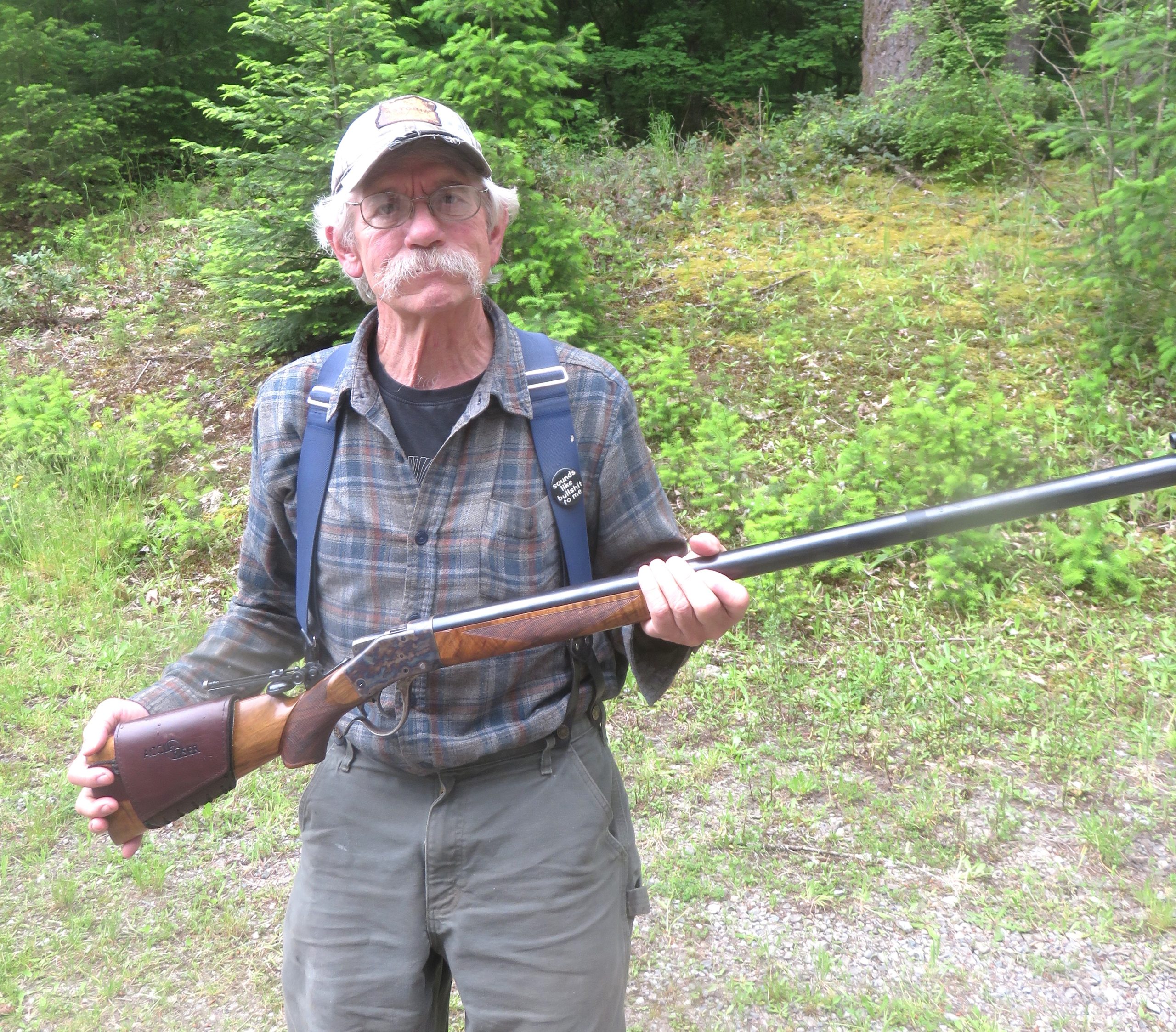
Bullets cast with the unknown harder alloy certainly looked good. They cast very nicely, and, because the softer alloy had a greater shrink rate, these dropped from the mold with a slightly larger diameter. That could be noticed while sizing the bullets and every bearing band around the bullets could be felt as the bullets were entered into the sizing die, where they were lubed at the same time. I’m going to guess that the alloy these bullets were cast with might fall somewhere between 20-1 and 16-1, lead-tin, but that is just a guess.
In the Old West Centerfires Match we fire ten shots at a 100-yard bullseye, then another 10 shots at a 200-yard bullseye. And this particular match included an after-match (which is not included in the aggregate) of another 10 shots at two of the gongs used in the Little Quigley Match, the buffalo at 200 yards and the bucket at 100 yards. That’s a total of thirty shots, and I prepared 31 rounds of ammo with the harder bullets, just so I’d have enough. The only change in this ammo from the description of the load which I gave earlier was the hardness of the bullets. This is a good example of “tweaking,” making just a slight change.
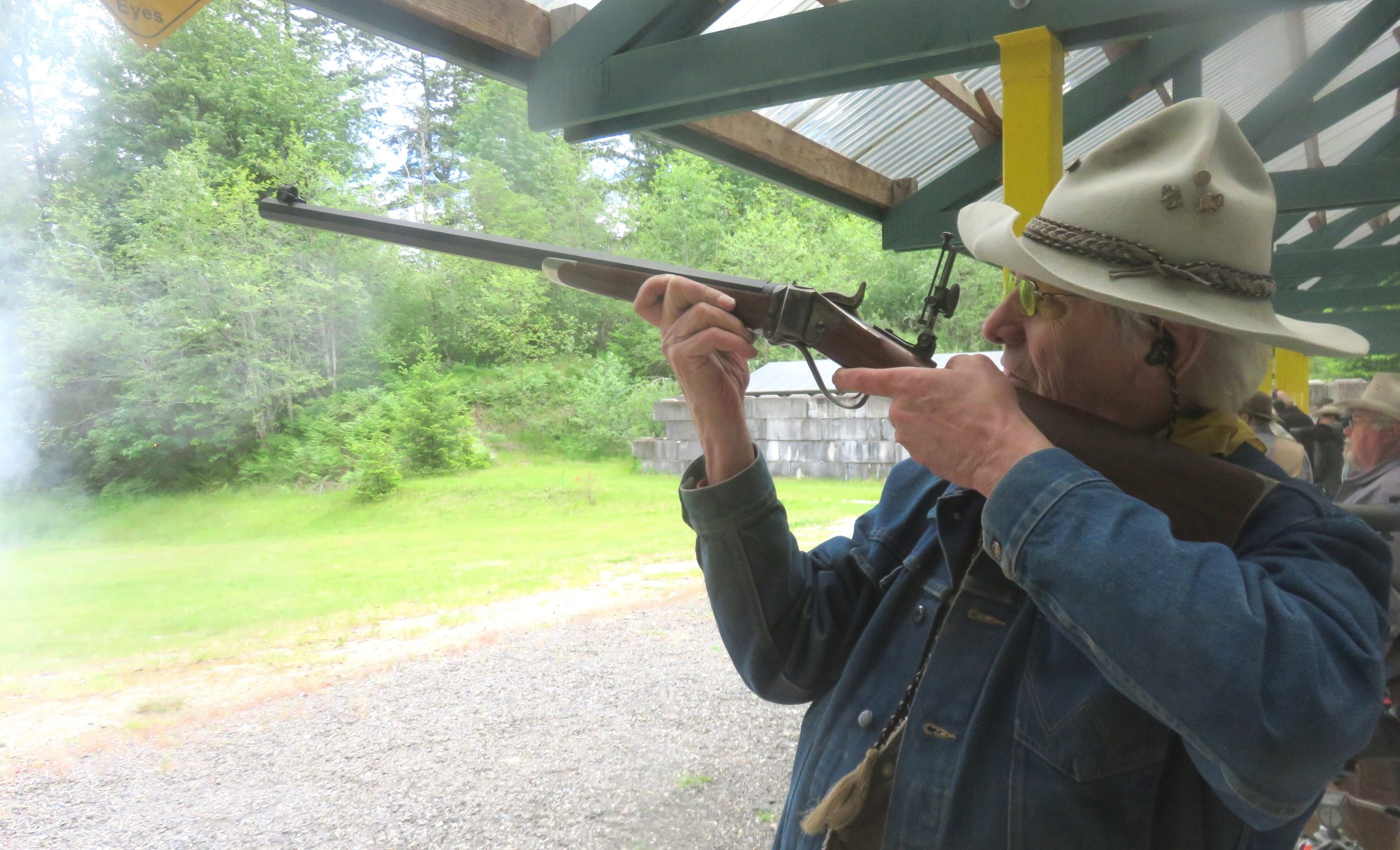
When the match got started, I was a spotter for Jerry Mayo, who was shooting in relay 1. After relay 1 had completed their shooting, the targets for relay 2 were posted. That’s when I got into my sitting position, behind the cross-sticks, to begin on the 100-yard target. Even though shooting while sitting and using cross-sticks is a good position, it isn’t as steady as shooting from a benchrest. Even so, an improvement was seen right away. Jerry was spotting my target and after just a couple of shots, with bullets hitting the target consistently enough to make sight corrects, my rifle’s sights were adjusted and I began scoring some X’s.
Ken Kurfurst was sitting just to my left, he had shot his targets in relay 1, and he also spotted my shots. Ken gave me some recommendations on sight adjustment, which worked out just fine.
After firing the 10 shots at 100 yards, I quickly adjusted the Vernier sight for 200 yards, aimed at the longer-range target and kept on shooting. No cleaning of the barrel was done between targets and for fouling control the barrel was just blow-tubed between shots. The shooting done at 200 yards was also good, right up to the last shot. For that last shot, I wanted to lower the rear sight just a little, hoping for one more 10 or 10-X because my shots were grouping high in the 9-ring. Somehow, I screwed that up and my last shot at 200 yards scored a 6, up at 11 o’clock. That was still good, at least it scored.
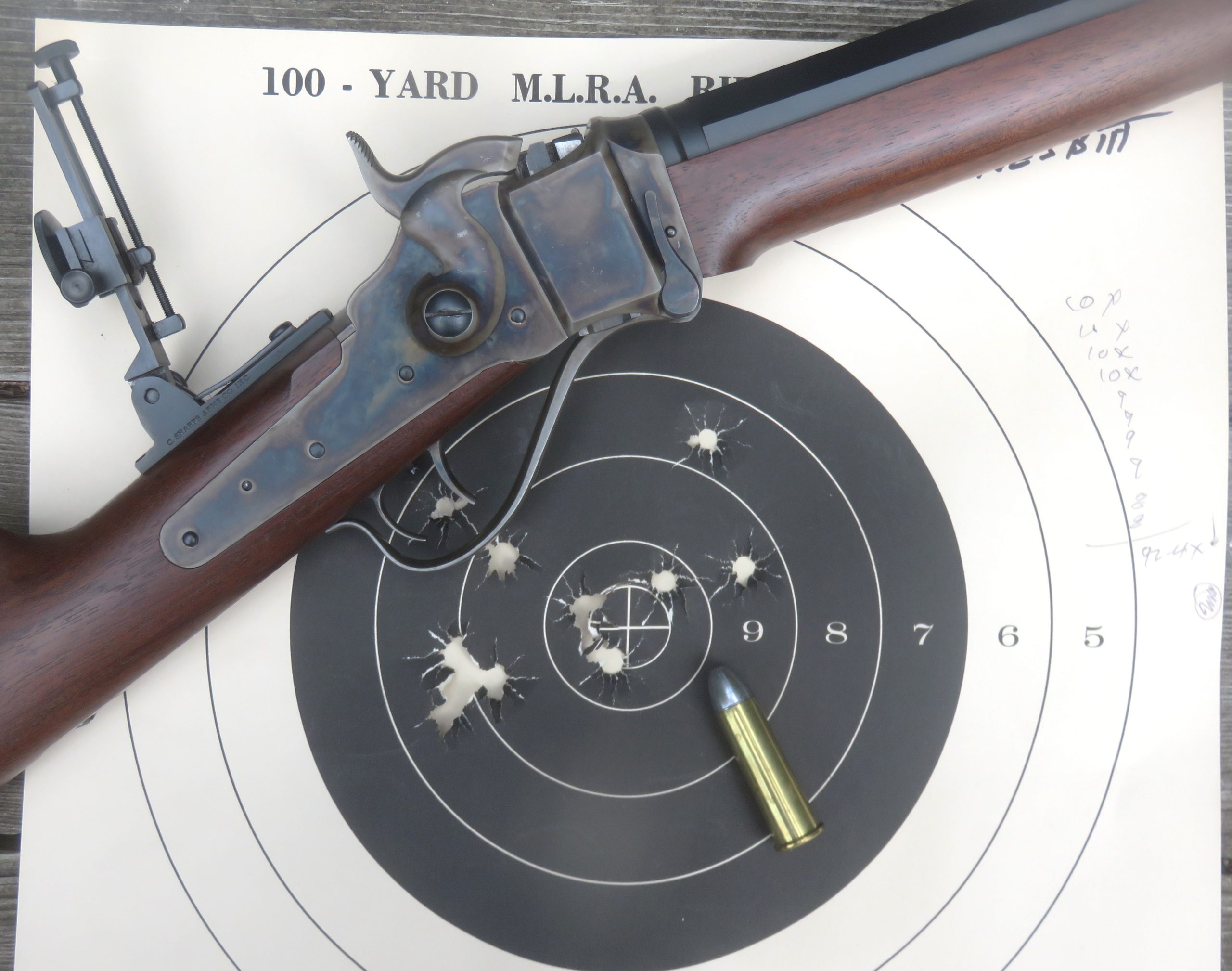
Those two targets were retrieved by all shooters who fired in relay 2, and the steel gongs were set up for the after-match. My shooting remained highly improved. Firing from the sitting position for the 200-yard buffalo gong, I hit it four out of five times. Then, while shooting with the heavy Sharps offhand, I hit the bucket twice out of five times. That’s a nice and dramatic improvement, hitting six times out of ten shots compared to only three times for twenty shots only a week before at the Little Quigley Match. And that after-match was won by Jerry Johnson, shooting a .45-70 Sharps.
My paper targets showed good improvements too. The 100-yard target held a score of 92-4X. That was the second highest score at 100 yards fired that day out of our group of thirteen competitive shooters, beaten only by Kurfurst, the match winner, and his 100-yard score was 93-4X, beating me by one point. And my 200-yard target had a score of 84-X which helped to give me a score for that match of 176-5X, placing 4th for the day and letting me pick a summer sausage from the prize table, making my .50-70 a real “meat-maker.”
While my shooting at the 200-yard target was still being done, I was able to talk a bit with Kurfurst about bullet alloy. He uses a 16-1, lead-tin, alloy for grease-groove bullets, what we often refer to as “greasers.” Ken generally scores very well, and he did his shooting at this match with a rebuilt Sharps Borchardt rifle in .45-90 caliber.
It looks like I’ll be trying some 16-1 alloy for my grease-groove bullets but for now I’ve mixed some rather hard alloy, actually unknown, with some of the 30-1 that I have on hand. The bullets cast from that mixture will be tried at the big Quigley Match which will be held over Father’s Day weekend. I’m hoping to be able to give a follow-up report on how those bullets worked out and I’m expecting that going to the harder bullets was a very good tweak for my .50-70. Following that, and after getting some new alloy, I can be more exacting…



